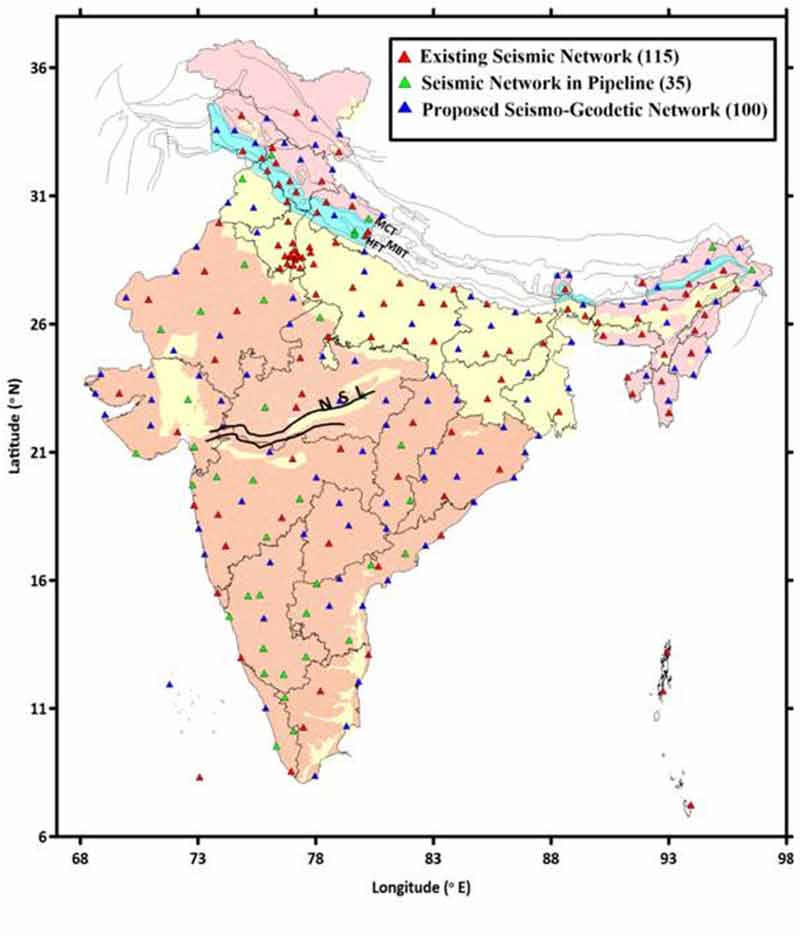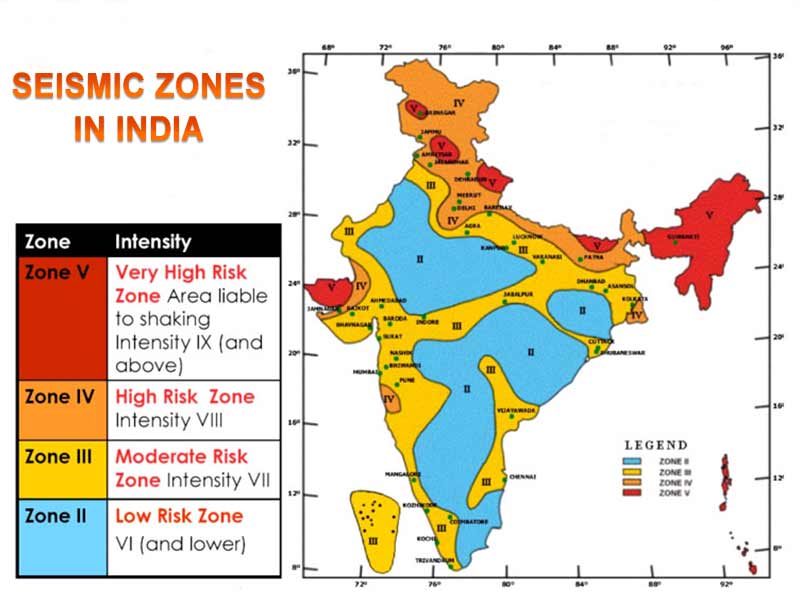- India
- Jul 24
35 new seismological observatories to become operational by December 2021
The National Center for Seismology (NCS) will commission 35 new stations by December, taking the strength of the seismological network to 150, Lok Sabha was informed on July 23.
Earth Sciences Minister Jitendra Singh said an additional 100 new stations will be installed by March 2026.
Monitoring of earthquakes
• The history of instrumental earthquake monitoring in India dates back to 1898, when the first seismological observatory of the country was established at Alipore (Kolkata) on December 1, 1898 after the great Shillong plateau earthquake of 1897.
• The occurrence of devastating earthquakes such as the 1905 Kangra earthquake, 1934 Nepal-Bihar, Assam and many other strong earthquakes necessitated to strengthen the national seismological network progressively from a paltry six in 1940.
• Early 1960s marked a very important landmark in the history of seismic monitoring, when the World Wide Standardized Seismic Network (WWSSN) stations started functioning globally.
National Center for Seismology
• National Center for Seismology (NCS), under the ministry of earth sciences, is the nodal agency of the government of India for monitoring earthquake activity.
• The NCS maintains a National Seismological Network consisting of 115 observatories spread across the country.
• The network is capable of recording any event of magnitude 5 and above in and around Delhi, magnitude 3 and above for northeast region, magnitude 3.5 in and above in peninsular, magnitude 4 and above in the Andaman region and magnitude 4.5 and above in border regions.
• This system has the latest tools for dissemination of earthquake information to the concerned disaster management authorities and other user agencies in the least possible time (8-10 minutes) for relief and rescue operations in hour of need.
• Apart from earthquake monitoring, NCS is also actively involved in the Seismic Hazard Microzonation and seismological research.
Major activities of NCS are:
• Earthquake monitoring on 24x7 basis.
• Operation and maintenance of National Seismological Network.
• Maintenance of seismological data centre and information services.
• Seismic hazard microzonation related studies.
• Aftershock/earthquake swarm monitoring/survey.
• Understanding of earthquake processes.
• Public outreach.
In order to spatially densify the gap areas and to improve the magnitude detection threshold down to magnitude 3 in the country, 35 new stations have been planned in the country and installation is already in progress.
It is also planned to strengthen the National Seismological Network further by adding 100 seismic stations in the next 5 years to increase the detection capability of earthquake up to magnitude 2.5 throughout the country.
Seismic zones in India
The Bureau of Indian Standards, based on the past seismic history, grouped the country into four seismic zones:
• Zone-II (Low intensity zone)
• Zone-III (Moderate intensity zone)
• Zone-IV (Severe intensity zone)
• Zone-V (Very severe intensity zone)
Zone-V covers:
• Parts of Jammu & Kashmir (Kashmir valley)
• Western part of Himachal Pradesh
• Eastern part of Uttarakhand
• Kutch in Gujarat
• Part of northern Bihar
• All northeast states
• Andaman & Nicobar Islands.
Zone-IV covers:
• Ladakh
• Remaining parts of Jammu & Kashmir, Himachal Pradesh and Uttarakhand
• Some parts of Haryana
• Parts of Punjab
• Delhi
• Sikkim
• Northern part of Uttar Pradesh
• Small portions of Bihar and West Bengal
• Parts of Gujarat
• Small portions of Maharashtra near the west coast
• Small part of western Rajasthan.
Zone-III covers
• Kerala
• Goa
• Lakshadweep Islands
• Parts of Uttar Pradesh and Haryana
• Remaining parts of Gujarat and Punjab
• Parts of West Bengal, western Rajasthan and Madhya Pradesh
• Remaining part of Bihar
• Northern parts of Jharkhand and Chhattisgarh
• Parts of Maharashtra, Odisha, Andhra Pradesh, Telangana, Tamilnadu and Karnataka.
Zone-II covers:
• Remaining parts of Rajasthan, Uttar Pradesh, Gujarat, Haryana, Madhya Pradesh, Maharashtra, Odisha, Andhra Pradesh, Telangana, Karnataka and Tamilnadu.
Some terms related to earthquake
Earthquake: Earthquake is the manifestation of sudden release of strain energy accumulated in the rocks over extensive periods of time in the upper part of the Earth. Earthquakes are classified as, Slight (M<5.0), Moderate (5.0<M<6.9) and Great (M>7.0) depending upon the magnitude on the Richter scale. An earthquake having a magnitude, M<2.0 is termed as a microearthquake.
Seismograph: A seismograph, or seismometer, is an instrument used to detect and record earthquakes. Generally, it consists of a mass attached to a fixed base. During an earthquake, the base moves and the mass does not. The motion of the base with respect to the mass is commonly transformed into an electrical voltage. The electrical voltage is recorded on paper, magnetic tape, or another recording medium. This record is proportional to the motion of the seismometer mass relative to the earth, but it can be mathematically converted to a record of the absolute motion of the ground. Seismograph generally refers to the seismometer and its recording device as a single unit.
Richter scale: The Richter magnitude scale was developed in 1935 by Charles F. Richter of the California Institute of Technology as a mathematical device to compare the size of earthquakes. The magnitude of an earthquake is determined from the logarithm of the amplitude of waves recorded by seismographs. Adjustments are included for the variation in the distance between the various seismographs and the epicenter of the earthquakes. On the Richter Scale, magnitude is expressed in whole numbers and decimal fractions. For example, a magnitude 5.3 might be computed for a moderate earthquake.
Epicenter: It is the point on the surface of the Earth, vertically above the place of origin (hypocenter or focus) of an earthquake.
Aftershock: An earthquake that follows a large magnitude earthquake called, “main shock” and originates in or around the rupture zone of the main shock. Generally, major earthquakes are followed by a number of aftershocks, which show a decreasing trend in magnitude and frequency with time.
Manorama Yearbook app is now available on Google Play Store and iOS App Store



